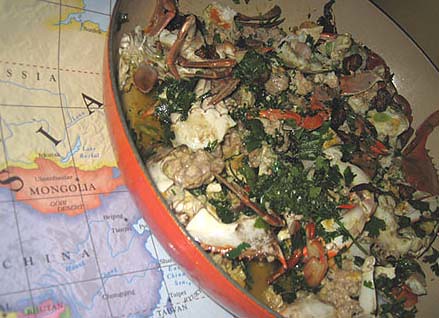Adapted from The North Fork Table & Inn, Long Island, using wild striped bass
Ingredients:
1 1/2 pound of cod fillet, slice into 3 steaks
3 stalks of celery, chopped
a small fennel bulb, chopped
1/2 cup of piquillo olives, pitted, finely chopped
red wine vinegar
olive oil1. In a skillet, let the celery and fennel sweat in low heat. Remove from heat when celery is tender enough. Transfer to a small bowl.
2. In a separate bowl, combine vinegar and the olive oil. Add the olives and whisk until desired consistency. Dress the vegetables and let it stand.
3. Prepare the fish. Preheat oven to 350º. In the meantime, heat some olive oil in a frying pan and sear the cod until a nice brown crust has formed on one side and it moves easily away from the pan when gently pushed with a spatula. Turn and brown the other side. Transfer the fish in the pan to the oven and bake for no longer than 7 minutes, just enough to cook the inside. Serve fish on top of the vegetables and top with leftover olives.












